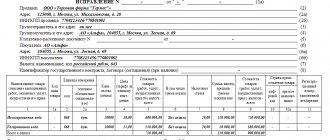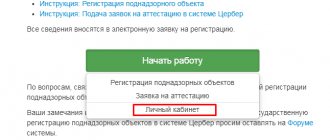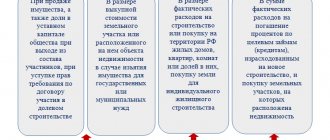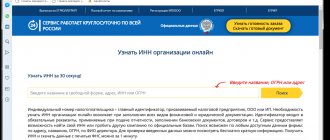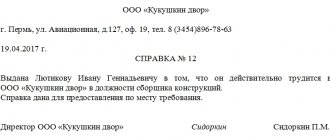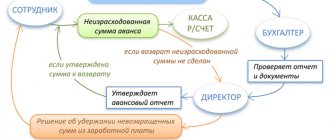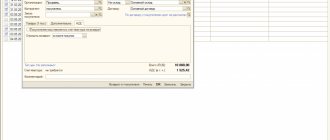Notifying the bank about erroneous receipt of funds
A company that has received an erroneous payment must send a written notification to the bank within 10 days of receiving the bank account statement showing the excess funds. The form of such a written message to the bank is not established by law, therefore banks establish such forms with their own internal documents. If the bank does not have an approved form, the organization draws up a message in free form.
Bank, depending on the terms of the bank account agreement:
- if it is possible to write off erroneously credited amounts from the company’s bank account without acceptance, writes off the erroneously credited funds without a separate order from the organization;
- If there is no such possibility under the agreement between the bank and the organization, the erroneously transferred funds are written off only upon receipt of the corresponding order.
Refund by payment order
Transfer of funds with errors made in the payment order can be divided into two types:
- unclear payments to the budget;
- other payments with errors (for example, erroneous transfer of funds to the wrong recipient, return of a loan with an error in the payment order, etc.).
Refunds of erroneous payments before the irrevocability stage are the same for both types and are made by the credit institution at the will of the payer. The rules for such a return are adopted by the bank in accordance with Order No. 383-P dated June 19, 2012.
If the irrevocability stage has been passed, it is more difficult to make a return, because the payment has actually been transferred and the recipient of the erroneous payment will be involved in the corresponding refund procedure.
The procedure for returning outstanding payments to the Treasury budget is regulated by Order No. 125n dated December 18, 2013.
For example, uncleared revenues to the federal budget may be returned by the Treasury if:
- the value of the “Purpose of payment” field does not indicate that this payment relates to payments to the budget (refunds are made at the request of the payer);
- the outstanding receipt was credited as a result of a bank error.
Clause 17 of this Procedure also provides for other cases of return of unclear payments. Their return is carried out within 3 working days on the basis of a return application, which is issued by the Treasury on the basis of a written request from the relevant payer.
The application form for a refund, as well as examples of payment orders for the return of funds, are contained in the Appendix to the Letter of the Treasury of Russia dated 02/09/2009 N 42-7.4-05/5.3-61.
As for other erroneous payments, it should be remembered that, on the basis of Art. 1102 of the Civil Code of the Russian Federation, a person who has acquired someone else’s property without justification is obliged to return it to the owner. For the purpose of such a refund, the payer should contact the recipient of the erroneous payment. In case of refusal, the payer will have to go to court.
The recipient of the erroneously transferred money should contact his bank within 10 days from the date of crediting (clause 2.1 of Section 2 of the Regulations, approved by the Bank of Russia on July 16, 2012 N 385-P).
In the beneficiary's accounting, the write-off for the return of funds based on an erroneous payment order is accompanied by entries Dt. 76 – Kt. 51.
Accounting and tax accounting of cash return transactions
In accounting, when returning funds, a posting is used that mirrors the one with which the funds were accepted for accounting:
- Dt 51 K 62 - cash receipt;
- Dt 62 Kt 51 - refund.
In tax accounting:
- simplified tax system: crediting funds is reflected in taxable income on the date of receipt of funds to the current account; upon return, taxable income is reversed by the date of return;
- BASIC: crediting and returning funds transferred by mistake is not reflected.
Voluntary return
An organization that has received an erroneous payment may return it voluntarily and without complaint. However, even with such an operation, she faces tax risks. The fact is that the return of erroneously transferred funds with or without VAT differs significantly. For organizations on the main taxation system (with VAT), this operation must be carried out according to documents and seriously justified in order to remove suspicions from the tax service of skimping on non-cash money.
It is easier to return erroneously transferred funds under the simplified tax system, since here accounting uses the cash method, when tax is paid only on funds representing income.
However, in both cases, one call from the affected company to justify the return will not be enough. A letter must be submitted on paper or electronically. In the latter case, a digital signature is desirable.
Oral appeal can usually be done only in case of a banking error. The facility operator will see where the inaccuracy has occurred and correct it. Which way is their business.
nds_pri_vozvrate_avansa_pokupatelyu.jpg
Related publications
The changes that have occurred with the increase in the VAT rate since the beginning of 2021 have raised many questions regarding settlements between counterparties working with this tax. Let's figure out how to correctly document transactions related to the return of the transferred advance payment to the buyer.
VAT upon return of advance payment to the buyer
The main criterion for the transition period is the rule: regardless of the size of the tax rate accrued on the advance payment (in 2018 - 18%, in 2021 - 20%) for shipments made in 2021, VAT is taken into account in the shipping invoice at the rate of 20%. There are no other innovations regarding VAT on prepayments.
The algorithm of operations remains the same: upon receipt of the advance, the supplier charges VAT and pays it, and no later than after 5 days, registers a “preliminary (advance) invoice” in the sales book and issues it to the buyer. The advance is recorded in the reporting quarter when it was received, and is reflected in the VAT return on page 070 of section 3.
When shipping goods and materials as an advance payment, the seller has the right to reimburse the amount of tax from the budget. But if the contract is terminated or its provisions are revised, and only part of the goods is shipped or the delivery is canceled completely, then the seller is obliged to return the previously received advance payment (or the unused balance). Its return is also associated with a VAT adjustment, since the seller has the right to claim a deduction from the amount of the unused advance payment if the basis for non-fulfillment of obligations was the termination of the contract or a change in its terms. In this case, the supplier issues an adjustment invoice, recording the refund.
The supplier can deduct VAT when returning the advance payment to the buyer on the date of return of the advance payment. VAT is calculated as the amount of the advance received multiplied by the rate that was applied when receiving the advance payment. The fact of a payment return must be reflected in accounting and confirmed by a payment document. You can claim the right to a deduction within one year from the date of return of payment for a failed (or partially failed) transaction. VAT on the return of the advance payment to the buyer in the declaration is reflected on page 120 of section 3.
What is VAT refund
VAT is a value added tax. It represents the withdrawal of part of the cost of goods or services in favor of the state budget.
VAT refund occurs only if its total amount determined for the reporting period is less than the amount of required deductions. To receive a VAT refund, you will need to fill out a declaration.
It should be noted that the tax refund algorithm is the same for both organizations and individual entrepreneurs.
To receive a VAT refund, a taxpayer must meet two criteria:
- Individual entrepreneur or LLC is a VAT payer;
- An entrepreneur or organization has the right to a tax refund.
VAT payers are individual entrepreneurs, legal entities, as well as citizens who transport goods across the border. In some cases, enterprises are exempt from paying tax contributions.
| Item no. | Taxpayer | Cases of VAT exemption |
| 1 | IP | If the entrepreneur has switched to special taxation regimes: Unified Tax on Imputed Income (hereinafter UTII), Simplified Taxation System (hereinafter STS), Unified Agricultural Tax (hereinafter UST) |
| 2 | Legal entities | Organizations that have switched to the simplified tax system, UTII, and the patent taxation system (hereinafter referred to as PNS). |
| 3 | Taxpayers who transport goods across the border. | They are VAT payers only if the Legislation of the Russian Federation and the legal regulation of the Customs Union (customs union) recognize them as such. |
Thus, VAT payers are recognized as persons applying the general taxation system. The responsibilities of individual entrepreneurs and organizations include:
- calculation of VAT on sales of goods and services;
- paperwork;
- maintaining a turnover journal;
- creation of tax reporting.
The right to apply deductions arises when it is presented by the supplier, as well as in other cases provided for by tax legislation, for example, for major repairs carried out by the company.
Important!
If an enterprise is not a VAT payer, but it has an obligation to calculate it and enter it into the budget (for example, when purchasing goods from a foreign supplier), it does not have the opportunity to receive a deduction.
VAT refund consists of sequential implementation of the established algorithm of actions. At the very end of the chain of operations, the company receives cash.
Refund of advance payment to buyer in 2021: VAT
So, when returning an advance payment received in 2021, VAT in the supplier’s accounting is accepted for reimbursement on the date of return of the advance in its amount multiplied by 18/118.
When shipping goods and materials as an advance payment, VAT is deducted on the date of shipment, and the rate of tax accepted for deduction is equal to the rate at which the advance payment was paid.
The same rules apply if a partial refund of the advance payment is issued to the buyer. VAT is accepted for deduction on the date of shipment, the unused part of the advance payment is transferred to the buyer, the tax on it is reimbursed at the rate applied on the date of receipt of the advance payment. In the purchase book, code “22” is used to encrypt VAT when returning the advance payment to the buyer.
Refund to the buyer: VAT on advance payment
The acquirer has the right to recover previously refunded tax from the prepayment, but it is important to remember that he is not obliged to deduct “advance VAT. Thus, the restoration of VAT when returning the advance payment to the buyer is relevant for him, unless the tax deduction has already been accepted.
Let us remind you that you can accept a deduction only if the following conditions are met:
the agreement between the parties provides for an advance;
the buyer has the following documents:
— invoice for advance payment;
— payment order confirming the transfer of the advance payment.
The buyer must declare the deduction in the quarter when all the specified conditions are met; it cannot be transferred to future reporting periods.
Postings when returning the advance payment to the buyer - VAT
Let's consider the reflection of transactions for the return of advance payments in accounting:
On December 10, 2018, Lama LLC, in accordance with the concluded agreement, received an advance from Rhythm LLC for the supply of furniture in the amount of 118,000 (including VAT 18,000). We will consider fulfilling obligations in several options:
The transaction was terminated by agreement of both parties on December 20, 2018, as a result of which the following entries were made in the parties’ accounting records:
Should I pay VAT when returning money to the buyer?
On the deduction of advance VAT when returning the advance payment to the buyer (Zaitseva S.
A payment order, in the “Purpose of payment” field, the basis for the transfer will be indicated “Return of advance payment under supply agreement N.”, and can serve as such a document-based basis for deducting “advance” VAT from the amount that falls on the withdrawn advance payment. If in the “payment” for a refund to the buyer the details of letters demanding the return of previously transferred money and a reference to the reasons for withdrawing the advance (part of the advance) are indicated, claims from controllers will generally be minimized. The capital's tax authorities, explaining a similar issue, indicated: in the event of a change in the terms of the supply contract or its termination, as well as the return of advance amounts against the upcoming supply of goods, the amounts of VAT calculated by the supplier of such goods and paid by him to the budget from the specified advance amounts are subject to full deduction in the amount after the corresponding adjustment transactions are reflected in the accounting in connection with the return of the advance, but no later than one year from the date of its return (Letter dated March 14, 2007 N 19-11/022386).
Clause 4 art. 172 of the Tax Code of the Russian Federation specifies: deductions of tax amounts specified in paragraph 5 of Art. 171 of the Tax Code of the Russian Federation, are carried out in full after the corresponding adjustment operations are reflected in the accounting in connection with the return of goods or refusal of goods (work, services), but no later than one year from the date of return or refusal.
But the wording (you will agree) is such that there is no doubt: clause 4 of Art. 172 is directly related only to paragraph. 1 clause 5 art. 171. Then it is not clear whether the annual limitation on the deduction of “advance” VAT applies to the cases provided for in paragraph.
2 clause 5 art. 171. If yes, then from what moment should the time be counted?
The agreement to terminate the contract, drawn up on 9.2013 (later than the deadline for submitting “clarifications” with the declared deductions - June 2013), did not save the situation: the company’s arguments that the right to deduct amounts of “advance” VAT arose only from the moment of termination of the contract (from the date of drawing up the agreement), were not accepted by the cassation authority. The court issued a verdict: by claiming deductions in June 2013, the company missed the deadline established by law for claiming these deductions.
What are the transactions when returning excessively transferred funds?
> > > December 16, 2021 Refund of excessively transferred funds - postings in this case will have their own special correspondence. Read about how to correctly account for such funds from the payer and the recipient in our material.
In relations between counterparties, errors in the transfer of funds are possible, associated with:
- indicating an incorrect payment amount;
- reflection in the purpose of payment of the details of a document that does not exist in the relationship.
- with the wrong choice of counterparty when generating a payment order;
Such errors can be identified by any of the parties, but will require a mandatory written expression of the initiative of the payer of funds to take actions carried out in connection with their correction. In a number of situations, the error can be corrected by adjusting the purpose of the payment if, for example, there is a supplier-buyer relationship between the counterparties, against which an erroneously transferred amount (or a payment with an incorrectly specified purpose) may be taken into account.
Correction via payment adjustment cannot be applied if there are no current engagement agreements with the payee. Regardless of the reason for which the payment was considered to have been made without reason, it is recorded by both the payer and the recipient using the same algorithms, taking into account the fact that for these two parties the transactions when returning the erroneously transferred funds will be mirror images.
Since erroneous transfers subject to refund have no connection with the calculations performed between suppliers and buyers, VAT on them is not allocated either for payment or in.
However, if calculations are carried out in foreign currency, then exchange differences attributable to income/expenses may arise. The recipient of the funds, when returning them, in the purpose of payment in the payment document should reflect information that this payment is used to return the funds erroneously transferred to him, and provide a link to the details of the document in which the payer expressed a request to return the money to him.
If the error is corrected by taking into account the transferred amount as payment under another supply agreement, then it will be taken into account in the usual manner for the supplier-buyer relationship with the implementation of the necessary VAT transactions. For the recipient of funds to whose current account money was mistakenly received, a posting reflecting the receipt of unidentifiable funds will be made at the time the payment document is linked to the accounting accounts. A similar amount is debited to account 76, and this is done by posting Dt 76 Kt 51 (52).
Accordingly, if the erroneous payment is returned to the counterparty’s settlement account, the posting will be reversed: Dt 51 (52) Kt 76. The exchange rate difference when returning the currency will be reflected by the posting Dt 91 Kt 76 or Dt 76 Kt 91. If, however, a decision arises regarding the payment reflected as an erroneous accounting for it as payment for future or
Deduction of VAT from the seller when returning advances and goods
CORRECT OPTION OF CALCULATIONS At the time of provision of services: DEBIT 62 CREDIT 90-1 – 107,600 rubles. — revenue from the provision of services is reflected; DEBIT 90-3 CREDIT 68 – 16,414 rub. — VAT is charged on the sale of services; DEBIT 68 CREDIT 62 “Advance received” – 16,414 rubles. — previously accrued VAT was accepted for deduction in the part of the realized CREDIT 62 – 107,600 rubles. - offset of advance payment. At the time of transfer of the unused advance: DEBIT 62 “Advance received” CREDIT 51 – 10,400 rubles. — return of the advance payment to the buyer; DEBIT 68 CREDIT 62 “Advance received” – 1586 rubles. — accepted for deduction of VAT on the returned part of the advance. Please note that in practice a situation may arise when the seller returns the unused advance payment to the buyer for the upcoming delivery of goods, performance of work or provision of services. In this case, the return of the advance payment is not related to the termination of the contract.
As a rule, the amount of tax previously accrued upon receipt of this amount has already been taken for deduction. With a literal interpretation of the provisions of the Tax Code, in the case of a refund of an advance payment not related to a change or termination of a contract, a deduction of previously accrued tax is not provided. Therefore, there is a high probability of tax disputes related to the legality of deducting VAT previously accrued on payment amounts for upcoming deliveries of goods (performance of work, provision of services). In this case, we recommend that you reverse this tax amount in your accounting and submit an updated VAT return to the tax authorities.
In one of their latest letters, tax authorities explained the procedure for applying VAT deductions in the event that the receipt and return of advance payments are carried out in the same tax period upon termination of the contract. The organization must reflect in the VAT return the amount of tax on the prepayment received and in the same tax period, if there are documents confirming the return of the amounts of this prepayment, and subject to a change or termination of the contract, it has the right to deduct the corresponding amount of tax 5. Upon receipt of the prepayment, the seller ( the contractor) is obliged to charge VAT, including if the advance payment was received in non-monetary means (for example, by a third party’s bill of exchange). In paragraph 5 of Article 172 of the Tax Code, the condition for deducting VAT in the event of a change in conditions or termination of a previously concluded agreement with the buyer (customer) is the return of the corresponding amounts of advance payments. However, it is not indicated that such a return must necessarily be made in cash. In this regard, we can conclude that when an advance payment previously received by the seller is returned by a third party bill of exchange, the corresponding amount of VAT is subject to deduction, regardless of whether this third party bill of exchange was received as an advance from the buyer (customer) or otherwise. This conclusion is also confirmed by a number of court decisions (post. FAS MO dated June 20, 2005 in case No. KA-A40/5402-05, FAS PO dated March 28, 2005 in case No. A12-20637/04-C36, dated April 26, 2007 in case N A55-11874/06, dated January 15, 2009 in case N A65-9611/2008).
Right to VAT refund
Only individual entrepreneurs and LLCs that use OSNO are entitled to a tax refund. To receive a refund, you must have VAT payer status and obtain the right to deduction. Refunds are received by:
- If the volume of sales of work and services of taxpayers turned out to be lower than the volume of purchases in this tax period;
- Legal entities exporting products abroad. They apply a zero rate when selling and receive the right to deduct tax paid when purchasing goods and services for sale abroad. To receive a deduction, the exporter must confirm the right to a 0% rate when selling products and justify the amount of the deduction;
- When using different tax rates when purchasing goods, paying for work and services, as well as their sale. Taxpayers can sell products with a VAT rate of 10%, but purchase materials or goods (services, works) taxed at a rate of 20.
VAT when returning goods from the buyer
The seller issues an adjustment invoice, guided by legislative acts, registers the transaction in the purchase book and makes corrections in accounting documents. An invoice is issued within five days from the date of registration of the return. Watch a video about adjustments from organizations on the simplified tax system. The majority of simplified companies operate without VAT due to the specifics of the special tax regimes applied.
The buyer can return the money or replace it with a similar product without defects. If the conditions regarding the range of goods were violated. Return of goods from the buyer with VAT to the supplier without VAT 506 of the Civil Code of the Russian Federation). Unless otherwise provided by the rules of the Civil Code of the Russian Federation on the supply contract, the provisions provided for in paragraph 1 of Chapter 30 “Purchase and sale of the Civil Code of the Russian Federation” apply to the contract for the supply of goods (clause
The basis of the “tax-free shopping” system (hereinafter referred to as TFS) is the procedure established in the European Union: if a person permanently resides outside the borders of the European Union, then when leaving it, you can receive a refund of the VAT paid when purchasing goods. The VAT refund mechanism is quite simple. When making a purchase of goods in a TFS store, they issue a special check, on which a customs stamp is placed when leaving the country, then you can receive money using this check. 2 However, keep some details in mind.
The amount is deductible by the seller within a year after shipment. By law, any transaction must be reflected in accounting journals (purchase book, sales book). When shipping, an entry is made in the accounting journals, and returns are also recorded in the journal.
The 1C program, when generating the tax that is payable to the budget, will itself make the necessary deductions. The main thing is to make all entries into the program in a timely manner.
Features of refunds from online stores
Interaction with online stores is carried out, as a rule, only in the form of non-cash payments. However, the possibility of returning goods during such a purchase is significantly difficult due to the virtual nature of the outlet .
To protect consumer rights, the seller in this case is obliged to inform the buyer about:
- legal address of the store;
- deadlines for making claims regarding the quality of the goods;
- period for returning a purchase;
- operating mode of the organization;
- the need to maintain the integrity of packaging and labels.
The legal status of online stores regarding the return of purchases is much worse than that of other retail outlets. The fact is that the buyer has the right to refuse the goods before its transfer, as well as after it within 7 days, without explaining the reasons for such a decision.
Moreover, if the seller does not provide the consumer with information about the period and procedure for returning the goods, then this period increases to three months.
Money for the purchase can be returned to the buyer not only to a bank account, but also to an electronic wallet at the consumer’s request. To do this, he simply needs to indicate the wallet details in the return application.
Are you looking for a way to make money online? Ways to make money on the Internet without cheating and investing at home are in this article.
However, the seller has the right to deduct from the refunded amount the costs of delivery of the purchase if they were paid by him.
It is only important to comply with the return conditions for such a purchase. If the obligation to return money for the delivered goods is not fulfilled, the trading organization may be held administratively and financially liable.
How to properly process a refund to a buyer in 1C, watch this video:
If the buyer is not satisfied with the product in any way, he has the right to exchange it or return it to the store within 14 days, not counting the day of purchase. And almost all buyers are well aware of this - the law protects them very well in such a situation.
But store visitors do not need to understand the nuances of documenting the return of goods - this is the concern of the sellers. And if something is wrong, they should also answer.
Expert opinion
Ilyin Ivan Pavlovich
Legal consultant with 6 years of experience. Specializes in the field of civil law. Recognized legal expert.
In our material we will tell you how to process a return from a buyer , in all the details that entrepreneurs in the field of retail and distance selling, as well as cashiers and sellers, need to know.
You will need to fill out several documents: for example, TORG-12 and KM-3. And the buyer may ask you for a return application form. All the necessary samples and blank forms are in MySklad: they can be printed or filled out online. Register and try it now: it's free!
The buyer’s right to return goods is regulated by two Russian laws: “On the Protection of Consumer Rights” (Article 25) and the Civil Code (Article 502). Few people know that these documents primarily talk not about returning, but about exchanging the product for one that would suit the buyer.
Only if the store does not have a similar product of a different color, style, size or configuration in stock, the seller is obliged to return the money. At the same time, by mutual agreement, an exchange can be provided later, when a suitable product becomes available for sale.
If such an agreement is reached, the seller must immediately notify the buyer of the availability of suitable goods.
However, practice shows that most often sellers return money for goods, and the buyer himself expects exactly this. The money must be given within three calendar days. The buyer is returned an amount equal to the price of the goods on the day of sale.
There is one more nuance in the return conditions, which few people know about. The buyer is not required to present a receipt for the goods; he can prove the purchase with testimony (Article 493 of the Civil Code of the Russian Federation). True, in this case the case may go to court.
The remaining return conditions are more or less known to everyone. The purchase that was brought back to the store must retain its presentation and consumer properties, the item must be new and never used, have seals and factory labels.
Refunds in case of non-delivery of goods, including VAT or not
In particular, it is customary to confirm any requirements with references to relevant regulations, contractual obligations, etc. The structure of the application must be strictly observed so that the supplier can understand without much difficulty what is required of him and for what reason. The text of the letter must contain: In general, the supplier must receive such requirements that cannot be interpreted in any way other than what is indicated in the letter. 3 Art. 168 NK).
There is discord between the non-payer and the non-payer. Thus, when goods are returned by a buyer who has not paid VAT, two options for VAT document flow are possible: - if only part of the goods is returned, the seller issues an adjustment invoice; - in the case of returning a full shipment of goods, an adjustment invoice is not issued, and in the purchase book the seller registers the original invoice that was issued when the goods were shipped to the buyer. If the product is not returned on the day of purchase, then the money is returned from the general cash register. Date of publication of the article: 12/08/2015 Plus, the parties to the purchase and sale agreement, due to the freedom of contract, are free to agree on the return of the goods for other reasons, for example due to the lack of demand for the product, etc. Thus, the seller has every right to deduction of “output VAT if the buyer returns goods previously purchased from him.
The only thing left to do, as they say, is to follow the procedure for applying this deduction. In particular, it is customary to confirm any requirements with references to relevant regulations, contractual obligations, etc. The structure of the application must be strictly observed so that the supplier can understand without much difficulty what is required of him and for what reason. In the case of making an advance payment for the ordered goods, the customer’s goal is precisely to return the funds. Should I pay VAT when returning money to the buyer?
Refund of erroneously transferred money with or without VAT
» What are the transactions when returning excessively transferred funds Contents of the article In relations between counterparties, errors in the transfer of funds are possible, associated with:
- reflection in the purpose of payment of the details of a document that does not exist in the relationship.
- indicating an incorrect payment amount;
- with the wrong choice of counterparty when generating a payment order;
Such errors can be identified by any of the parties, but will require a mandatory written expression of the initiative of the payer of funds to take actions carried out in connection with their correction.
In a number of situations, the error can be corrected by adjusting the purpose of the payment if, for example, there is a supplier-buyer relationship between the counterparties, against which an erroneously transferred amount (or a payment with an incorrectly specified purpose) may be taken into account. Correction via payment adjustment cannot be applied if there are no current engagement agreements with the payee.
Regardless of the reason for which the payment was considered to have been made without reason, it is recorded by both the payer and the recipient using the same algorithms, taking into account the fact that for these two parties the transactions when returning the erroneously transferred funds will be mirror images. Since erroneous transfers subject to refund have no connection with the calculations performed between suppliers and buyers, VAT on them is not allocated either for payment or as deductions.
However, if calculations are carried out in foreign currency, then exchange differences attributable to income/expenses may arise. The recipient of the funds, when returning them, in the purpose of payment in the payment document should reflect information that this payment is used to return the funds erroneously transferred to him, and provide a link to the details of the document in which the payer expressed a request to return the money to him. If the error is corrected by taking into account the transferred amount as payment under another supply agreement, then it will be taken into account in the usual manner for the supplier-buyer relationship with the implementation of the necessary VAT transactions.
For the recipient of funds to whose current account money was mistakenly received, a posting reflecting the receipt of unidentifiable funds will be made at the time the payment document is linked to the accounting accounts.
A similar amount is debited to account 76, and this is done by posting Dt 76 Kt 51 (52). Accordingly, if the erroneous payment is returned to the counterparty's current account, the posting will be reversed: Dt 51 (52) Kt 76. The exchange rate difference when returning currency will be reflected by the posting Dt 91 Kt 76 or Dt 76 Kt 91.
If, in relation to a payment reflected as an error, a decision arises to take it into account as payment for a future or already completed sale of goods (performance of work, provision of services), then on the basis of written information received from the payer, an entry will be made Dt 62 Kt 76 with the ensuing hence the VAT implications.


